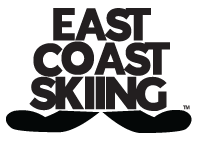Optimizing the Angles of Ski and Snowboard Edges, why does it matter?
The angle you choose can significantly affect how your equipment handles. Back in the early days of skiing, skis came with a default ninety-degree angle. However, by relieving the base edge and sharpening the side edge, you can make your skis or snowboard respond more aggressively which helps to maintain excellent grip on hard snow and ice. As a general rule, the smaller the angle is from 90 degrees the more aggressive the ski becomes, this is excellent for advanced, experts, professionals and racers. Beginners and intermediate skiers and riders benefit from having a more forgiving base and side edge. Ski resorts and most ski shops generally give all skis and intermediate or stock edge profile, and since your edges matter more as you become a better skier, for an advanced to professional skier and rider it’s crucial to have your skis dialed in for optimum performance and control.
How do I know what edge angle my skis are?
Ski Manufacturers post their skis specs online which includes the base and side edge angles, it’s not the easiest to measure ski and snowboard edge angles and not all skis are created equal, so we have come up with an Edge Angle Gauge which will quickly and easily let you know where your skis are at, a great addition to any ski and snowboard tuning kit.
How do you tune ski edge angles for skiing and riding ability?
- 90°: Ideal for beginner skiers and young kids just starting to ski, this edge angle offers stability and ease for those new to skiing
- 88°: Advanced skiers will appreciate this angle since it requires less effort to ski on the side edge, providing a smoother and more efficient ride.
- 87°: Recommended for athletic skiers with ample experience, this sharper edge helps skiers hold an edge while skiing with high carving edge angles, and is suitable for hard pack snow and ice.
- 86°: Favored by professional ski racers, this angle offers a competitive edge for those with excellent technique on hard pack and icy race conditions.
- Note that sometimes the side edge angle is referred to in degrees from 90°, so in other words they would say 88° is 2°; We recommend referring to the base edge bevel as 0-1° and the side edge angle as 86°-90°
